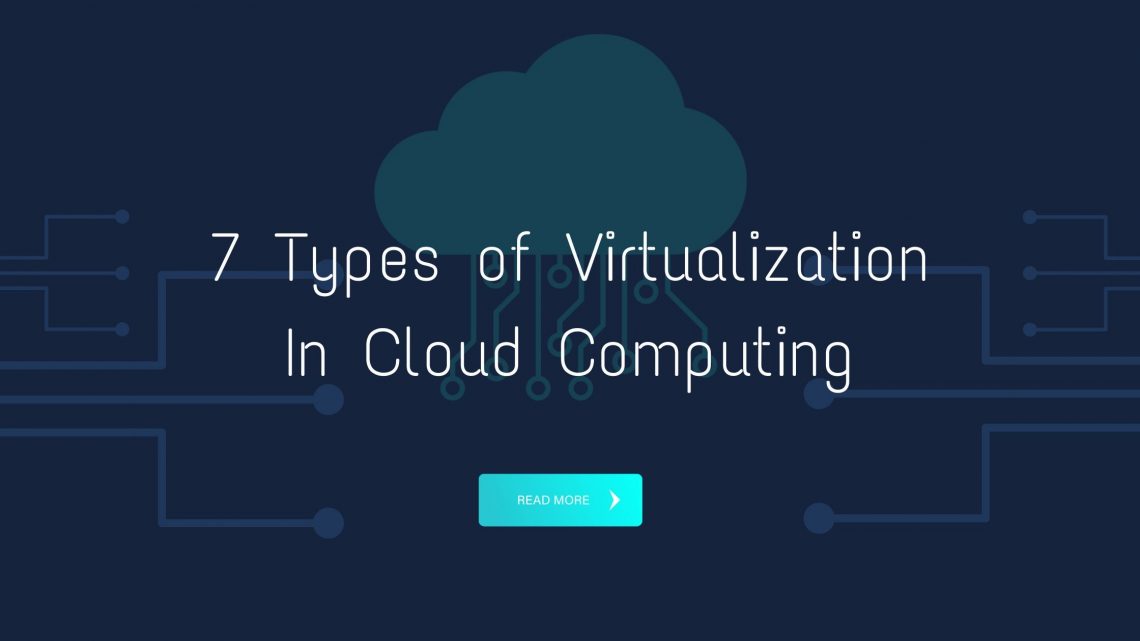
7 Types of Virtualization In Cloud Computing
Virtualization is the type of technology that IT professionals have been using for some time now, but it has only recently become widespread around the entire IT sector. It has emerged as a transformative force that not only stimulates the infrastructure of the organization but can also help to improve the organization’s overall performance.
In this blog, we’ll help you learn about virtualization and its various types but before let’s know about virtualization. Before moving onto the crux it is vital to exclude the underlying clouds.
What is Virtualization?
Virtualization is a method of creating a virtual environment with aspects like the operating systems, network elements, storage systems, and computing environment rather than sticking with the physical aspect of the infrastructure of an enterprise.
Virtualization can also be called as software that differentiates physical infrastructures and generates many dedicated resources. It’s that underlying technology that gives cloud computing power.
Experts say virtualization is a software that supports multiple operating systems and applications to operate simultaneously on a single server. It is based on a technology that distinguishes the virtual environment from the actual physical infrastructure.
It assists an organization to reduce IT expenses and improve computer hardware’s efficiency, flexibility, and performance.
Virtualization Benefits
Since you’ve got an insight of what virtualization is, let ‘s talk about the various benefits it carries. The benefits of virtualization are as follows:
Maximum resource utilization
By subduing the number of physical systems, virtualization lets you get more utilities from the servers. This helps underused devices to make use of the maximum investment in hardware.
Multiple-system use
Virtualization with the help of single physical hardware enables you to run a lot of applications. You can even operate various operating systems on the same hardware for those apps.
Boost ROI
Virtualization helps you to leverage and streamline your resources by reducing the maintenance needed physical hardware. It makes full use of the servers that you require.
Types of Virtualization
Virtualization is of different types. Read to learn how and why these forms are advantageous and vary from each other.
Virtualization of hardware
This virtualization is the most common type as it is associated with the application uptime and hardware utilization. The prime motive behind this technology brings all of the physical servers together into one massive physical server. In this way, the processor will work more efficiently and effectively.
The physical server’s operating system is converted into a well-to-do OS that runs on a virtual machine. It comprises of a hypervisor that manages the memory, processor and other elements only by allowing multiple operating systems to function on the same machine with no source code.
Hardware Virtualization is further split into 3 sub-categories that include:
- Full Virtualization
- Para Virtualization
- Partial Virtualization
Software Virtualization
Software Virtualization consists of the primary device ability to build and run a further virtual environment. This allows a computer system to run a Guest OS. For instance, Linux may run a Microsoft Windows OS as a guest.
Software Virtualization has three types which are:
- Operating System
- Application Virtualization
- Service Virtualization
Memory Virtualization
To build a single virtual memory as a pool physical memory throughout different servers is connected it is called Memory Virtualization. You can avail of the benefit of larger working memory with this. Perhaps you’ll be familiar with this expression because Microsoft Windows allows a portion of your storage to act as an extension of your RAM.
Memory Virtualization consists of two subtypes:
- Application-Level Control
- Operating System-Level Control
Storage Virtualization
Storage Virtualization is the process that helps to group physical storage from a number of storage devices within the network. So it acts as a single device for storage. With this, it also has many benefits as it has the ability to reduce downtime, speed, efficiency, and balance of loads.
Storage Virtualization has two subtypes:
- Block virtualization
- File virtualization
Data Virtualization
It is an independent abstract layer of database methods that helps in manipulating data. It assists in error formatting and reduces the input of data.
Network Virtualization
Network Virtualization is a multiple sub-network that could be built on a physical network similar to that. This lets you better track and identifies data usage. This also keeps file movement restricted across multiple networks to ensure security. It is considered as reliable as it never forms a problem for other networks.
The two subtypes of Network Virtualization are:
- Internal Networks
- External Networks
Desktop Virtualization
It is one of the most commonly used and popular virtualization types, as in this form of user desktops that are placed on a remote server. The user may then operate his desktop from any location according to his or her wish. There’s no need to go to a particular location because everyone can operate smoothly from home.
Data transfer operates over secured protocols so there is no risk to data mining.
Conclusion
While Virtualization is not appropriate for everyone, but in a manner, it provides protection, cost-effectiveness, and efficient utilization of the available resources that you may consider as part of your organization.
We hope this post will enable you to select the most suitable among various forms of Virtualization. Always go with those service providers who can handle and track your usage easily. And you don’t have to spend a lot of time running virtual servers and that might be helpful to you. To know more about Tally on cloud services visit Tally-on-cloud.com.
Read other related blogs:
–7 Types of Virtualization In Cloud Computing
–Why choose Cloud Hosting over Traditional Hosting?



